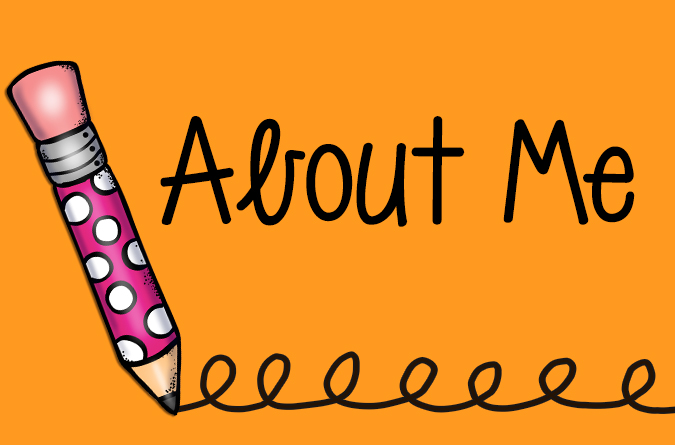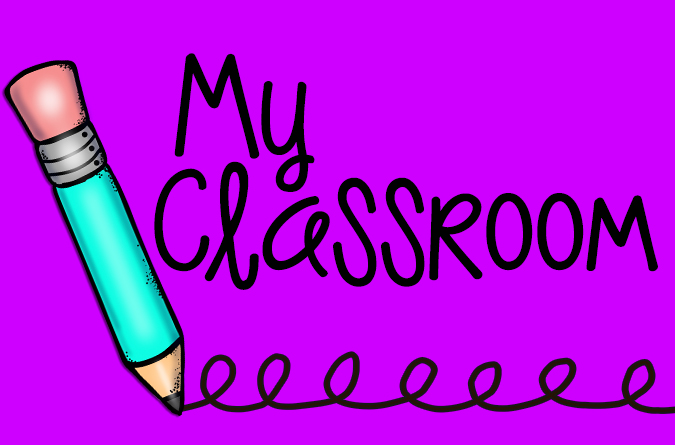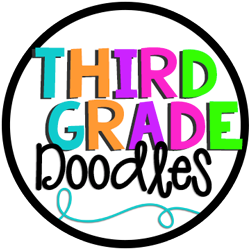Summer break is finally here and life has slowed down. It is really nice to have some quiet time to reflect on the school year and to begin thinking about changes for next year. I started "math workshop" this year and I wanted to take the time to blog about it while it is still fresh in my mind.
I started by splitting my students up into three groups: low, medium and high, with 8 students in each group. I know this seems fairly basic, but I needed a quick solution and it worked great! Since I started this mid-year, I knew (without a lot of additional assessment) which students would be in which group. When I start up in the fall, I will use grade level common assessments for each unit to group students. If you need some quickie assessments for this purpose, or for a quick check up on a standard, these are perfect:
My math block is 90 minutes. Here is how it all plays out:
1. Fact Fluency Quick Quiz (5 min)
2. Whole Group Lesson (25 min)
3. Rotations (60 minutes/three 20 min cycles)
I would love to figure out how to make time for a 10 minute post-workshop share, but it was a tight squeeze just fitting in all of the above. I also want to work in more time for fact fluency practice, even though I do include some weekly fact practice during math workstations).
I used the Engage NY lessons this year, and they worked perfectly for this schedule. Most of the lessons take about 25 minutes or less, so I do those as a whole group, and then during our guided math groups, we review what was learned and do some guided practice with the concept. Engage NY has Problem Sets, which we also worked on during our small groups. With my low group, I would usually do some remediation to help them to understand the lesson and with my high group I would extend the lesson to make it more challenging.
Each student was given a plastic pocket folder to keep their workbook and any other papers that they would use for math. I used These folders also had a small pocket, which was great for keeping additional math tools like rulers, fraction strips, clocks, or other manipulatives that we might need. I used the Smead Poly Two-Pocket Folder with Security Pocket, Holds up to 100 Sheets, Letter Size, Blue, 5 per Pack (87701)
ROTATIONS
- with the TEACHER
- by MYSELF
- with a PARTNER
I have a visual timer in my classroom and feel strongly that all classrooms should have one. Before the start of each rotation, I would set the timer to 20 minutes. This helps students to keep track of their own time and also helps me to stay on task with my group! You can purchase the one pictured here from Amazon. Just click on the image to purchase!
I don't know about you, but I have very limited wall space in my classroom for displaying charts and things. Therefore, I did not want a cumbersome rotation board that we only would use once per day taking up prime real estate. So, I created a powerpoint slideshow, which I display during math on my interactive white board. It could also be displayed on any computer screen or simply printed out on paper and displayed.
These are the powerpoint slides that I display. An editable version of these slides are included in my Math Workshop Made Simple Bundle available in my TPT store. But if you just want the board...you can still get it for free...HERE!
I rotate the names down on this board DAILY.
This is obviously when students work in small guided math groups with me. My group meets me in the large carpeted area of my classroom, where we would all sit on the floor in a semi-circle. This gave us plenty of space. Students would bring their math folder, a pencil and a clipboard. We would begin by going over the previous day's math work and homework, then we would work on the current day's lesson, which included some guided practice.
I always meet with my lowest group first, so that the lesson is still fresh in their mind. Their next rotation will be working independently on the practice pages for that day's lesson (which we started together in our group). Since we just met together for some intense guided practice, they are usually able to do it on their own at this point. My high group meets with me last, and their first rotation on the next day is to do the independent practice. They are capable enough to carry over the lesson to the next day with no problem. Also, they often don't need the whole 20 minutes of our small group time, so they can work on the practice pages and often finish at that time. In that case, I usually have some challenge work for them to do instead on the next day during their first rotation.
Our first rotation always looks like this:
low group: with the TEACHER
med group: with a PARTNER (math work stations)
high group; by MYSELF (independent practice from previous day's lesson)
This rotation is for math work stations. I set up nine boxes (three extra boxes are shown) with different math activities such as games and task cards. Students work on these with their math partner during this 20 minute rotation. The stations are self-checking (I always include an answer sheet), but students are required to turn in their work from the station (unless it is a game and there is nothing to turn in). All of the stations can be done with a partner or independently, so if your math partner is absent, it still works!
I set up the 9 boxes with my three groups in mind. I set up three boxes for each: three for my high group, three for medium and three for low. That way I know that students are working on something at their level, that can be done with a minimal amount of assistance or explanation. These work stations usually align with the unit we are currently working on, but I occasionally include some activities that offer spiral review of past learning. It is important that the work station activities can effectively engage students for at least 20 minutes, so that you are not getting the "We are done....what should we do now?" routine.
My suggestion is to provide games that can be played again and again, or enough task cards that they likely cannot do them all in the time provided. Open ended activities that do not need to be done to "completion" work best. For example, I don't recommend worksheets because some students can finish those really fast, and some take forever. Task cards work great, since they can work at their own pace and do as many as possible in the time provided.
Here are some of my "go to" math work stations:
Lakeshore Learning File Folder Games. This is a tiny picture, but if you click it, it will take you to the website for a better view. These games are common core aligned and super engaging. They are easy to set up, and students are able to use them with no explanation at all. These are perfect for math work stations!! They come in the most amazing file boxes for easy storage and since they label these with the common core standards right on the side of the box, it is so easy to find the game that I need! I love them! They are pricey...but worth finding a way to get your hands on some! You can purchase them directly from Lakeshore Learning or on Amazon. Click the image below for purchasing information.
Thinkfun Games are addicting logic and problem solving games that work great for math work stations. If you cannot afford to purchase some for your classroom, they have a collection of free downloadable games that are awesome! One of my favorite's is the ThinkFun Math Dice Junior Game .
.
Games 4 Learning. If you have not checked out this TPT store, you should! This teacherpreneur from Australia has some simple, no-prep games that are perfect for math workstations. You just print them, add a baggie of game markers, and some dice and you are ready to go!
Task Cards. You can find these all over the place on TPT. Most are pretty cheap and I have even found some great task cards for FREE! I like to organize these in binders by math standard, to make it easy peasy to find the ones that I need in a snap! I put each set in zip loc bags, copy the answer sheets and answers, and put it all in a plastic sheet protector (or two), which I clip into the binder. I have a task card binder for each math strand that I teach.
Tablets and Laptops. Twice per week students work on a tablet or laptop instead of doing a math workstation. There are thousands of amazing free math websites and apps. My favorites are Khan Academy and Moby Max, which both are free and provide instruction as well as review and practice. Our district purchased Compass Learning for us, which is great too! Technology is also a great way for students to practice their basic facts! You can usually find Kindle Fire Tablets for around 50 bucks on Amazon!
Math Workstations are great and the activities that you can choose are endless. It is important to carefully organize your materials so that when it is time to change out your work station, it is not a huge chore. You know right where to find everything.
BY MYSELF
During this rotation, students complete independent practice on the skill learned in class that day. If your math program has a student workbook, this would be a great time to have students work on it. You could also provide worksheets from superteacherworksheets.com or commoncoresheets.com. As mentioned, I used Engage NY this year so students used this time to finish up the Problem Set that we started during our group and also can work on the homework practice pages at that time. At the beginning of each unit, I put together a workbook for students that included all of the problem sets and homework pages for each lesson. This saved me time at the copy machine and helped students to keep their work together and organized.
That about covers it! I know I have probably left something out, so please feel free let me know if you have any questions about this post! I know this system is not perfect, and I will be fine-tuning things this fall! But it is a simple way to get started with math workshop using rotations.
You can now purchase my Math Workshop Made Simple Bundle...it includes all of the information for getting started, along with the editable rotation board pictured above, printables for making a pocket chart rotation board, plus teacher pages for keeping track of everything. I have even included as a bonus my growing bundle of common core math task cards (third grade) and formative assessments to help you with grouping your students! This is an incredible deal...so grab it HERE at my TPT store:
Here are some other math products that you might find interesting:
If you like INTERACTIVE NOTEBOOKS, here are some resources that you will love:
I hope you enjoyed this post! Thank you so much for supporting my work by visiting today!
12















































